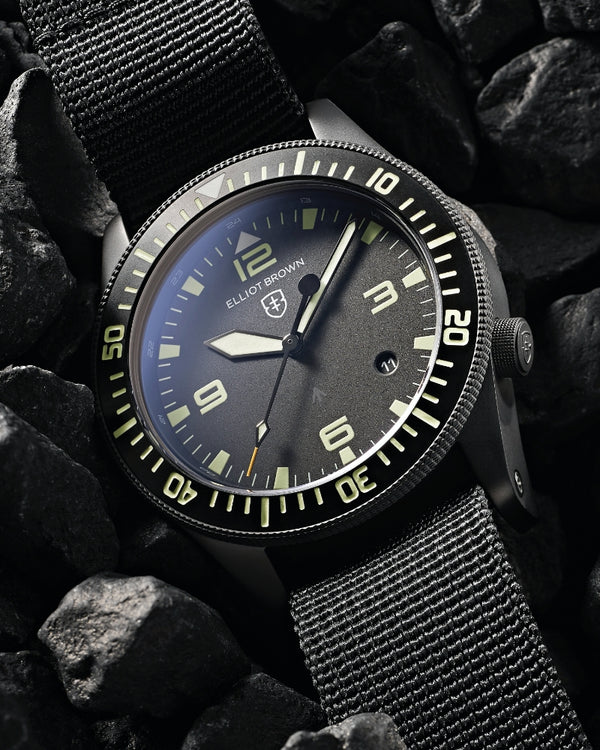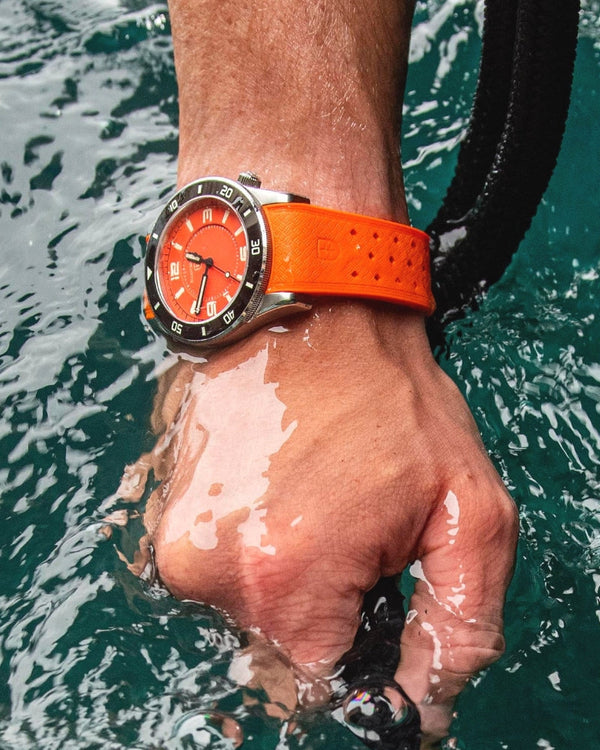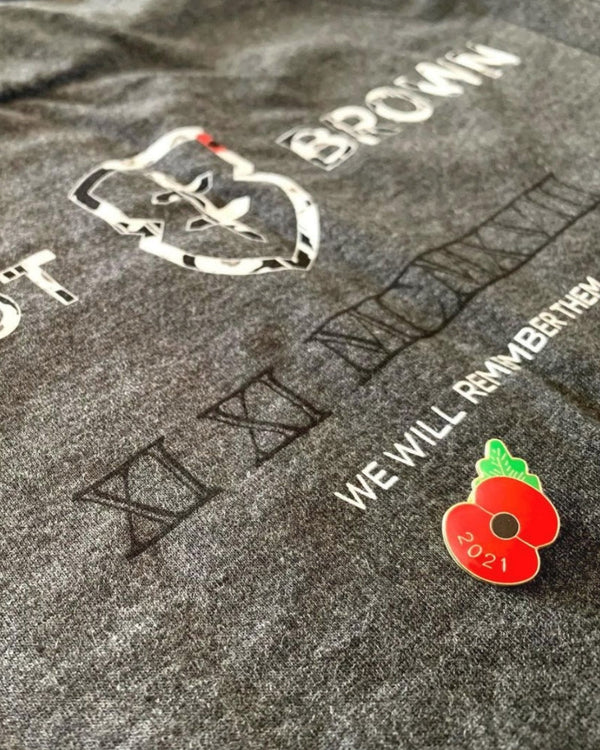Beachmaster - A Landmark Watch

The original idea for Beachmaster® came from a Royal Marines endurance event launch we were supporting. A watch enthusiast named Alexander Barr sought us out to ask if we could design a 24-hour mission timer that could count down to an event start, then count the elapsed ‘mission’ time once the event had begun.
His inspiration was drawn from the run-up to, and events immediately following, the commencement of the D-Day landings, when Beachmasters, under direct fire, guided thousands of personnel and vehicles; making split-second, life-changing decisions.
It needed to be as rugged as our military-issued models, yet beautifully considered, with elegant functionality you might not even notice until needed, at which point it should transform into a high-functioning tool watch.
If Beachmaster® has taught us one thing, it’s that there’s always room for fresh thinking.

Undaunted by the fact that apparently no one had ever designed anything like this before, we began sketching scale ideas for an inner rotating bezel. We soon realised that instead of just counting upwards from 0 to 60 minutes, we could split the scale so it counted down 30 minutes and then counted up 30 minutes. But that wasn’t enough—we needed 24 hours’ worth of timing.
Using a GMT movement with an additional 24-hour hand - designed differently from the others for easy recognition - and could be extended right to an outer bezel with a mission timing scale. Thanks to the slower roation of the GMT hand, this scale could count a total of 24 hours, split into any combination of count-down or count-up segments. The idea felt like it would meet the challenge.
Nothing is ever that simple, though.
A true GMT watch displays the time in a second time zone via a separate 24-hour scale. We started drawing hands with two reference pointers - one for the outer mission timing scale and one for an inboard 24-hour GMT reference. The sketches felt simple, uncluttered, elegant and could potentially count down to mission start 12 hours away, then count mission time for the next 12 hours. We could even split the 24-hour scale unevenly for example, an 18-hour countdown followed by a 6-hour mission time.
Almost three years from the initial concept, we were still tweaking, honing, adjusting line weights, case details, bezel design, chamfers, undercuts, brushing, polishing, lume colours, hand dimensions, and finishes. The more time we spent with it, the more convinced we became that it had the scope to be a truly special watch - compelling in its simplicity and originality, delivering exactly on brief in a cohesive way that felt greater than the sum of its parts.

We searched extensively for any watch that might have beaten us to the punch, certain that something similar must exist, but found nothing. Eventually, we considered the possibility that we had created a new idea. The obvious next step was a patent application.
We drew dozens of annotated illustrations and wrote a 4,700-word document to support the application. We sent it off and waited anxiously. Several months later; far quicker than normal, confirmation came from the UK Patent Office that our application had been accepted, and our design appeared to be original. The application was then published to invite any objections.
After an achingly long wait, we received confirmation that the patent had been granted. We had successfully created a certified original mission-timing watch.
A few short days later, first prototypes arrived in our hands. After such a long, detail-driven process, reaching a successful conclusion brought a flood of happy emotions - a moment we’ll always remember fondly. The patent certificate now sits proudly at our office entrance.

One of the most satisfying elements of creating our watches is the way they feel. Anyone can CGI or Photoshop an image, but there’s no substitute for holding a watch and feeling its balance, its meticulous finishing, and its depth of engineering. Beachmaster exudes the ‘hewn from solid’ quality our brains instinctively crave.
Twist the external diver’s bezel and you feel the obsessive care - 120 smooth, precise clicks per rotation. Twist the upper crown to move the inner mission-timing bezel and the tactile connection intensifies. It took 18 months to perfect the way the bezel click-locks into every position, ensuring the mission timer remains set. This is achieved via two spring-loaded ceramic ball bearings housed in the outer case, engaging with specially shaped detents on the inner bezel to prevent accidental adjustments. If we could capture our brand DNA in a mechanical sensation, this would be it.
How it works:
Setting the mission countdown takes seconds. Rotate the inner bezel so that H rests at the desired hours and minutes before mission start relative to the GMT hand. (Image below shows 6 hours count down to H hour, mission start) The GMT hand will count down to H-hour, then automatically begin counting elapsed mission time - up to 12 hours from start.
The GMT hand will count down to H-hour, then automatically begin counting elapsed mission time - up to 12 hours from start.

You could, for example, rendezvous or check in with colleagues every 4 hours after mission start (see drawing above with GMT hand now at 4h after mission start). The minute and second hands can also be included for precise timing.

On the outside, there's also a 120 click diver’s timing bezel for separate and concurrent timing duties, for example timing remaining oxygen. (Drawing above shows 40 mins remaining until the minutes hand reaches the Zero marker on the external bezel)
After all the fanfare and patent excitement, Beachmaster is such an easy watch to fall in love with - perfectly proportioned, classy, and elegant, making it a natural daily wearer. We chose premium Swiss Quartz and Automatic movements to create two distinct price points, bringing Beachmaster to the broadest audience we could.
A glance at its comprehensive specifications and the stylish images, is all you need to appreciate just how much work went into perfecting such an original complication.


















